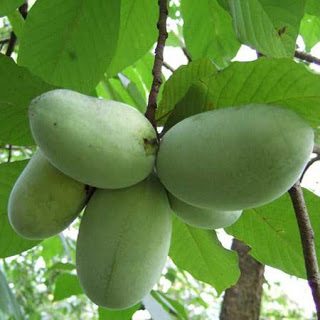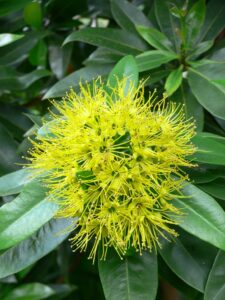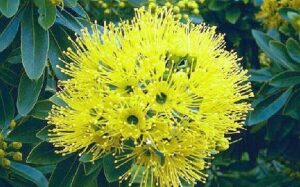The best time to prune is late winter or early spring, when the tree is dormant.. Corrective pruning consists of removing broken, interfering, dead, or diseased branches. Since pawpaw fruit is produced on new growth, annual pruning will stimulate new growth on older trees.
The following advice for this post has been sourced from Gardening Australia January 2019 issue.
Phil Dudman suggests the following when cutting back a pawpaw:
By cutting back an established pawpaw tree when it becomes too tall encourages multiple trunks that will produce fruit at a more reachable height.
Step 1: Prune the tall, heavy trunk in small, easy-to-handle sections. Make the first cut on the underside of the trunk (or opposite side if it’s perfectly vertical). Use a ladder or pole saw to increase your reach.
Step 2: Follow up by making a top cut slightly higher than the undercut. The pruned section will snap and fall cleanly directly below as you cut. If you need to protect plants below, stop cutting before the snap, break it off by hand and then place it where you want it.
Step 3: Continue working your way down the stem, cutting off small sections.
Step 4: Make your final cut fairly low down on the trunk – as low as knee height. New fruiting shoots will form from the section of trunk that is below the cut.
Step 5: Cover the exposed cut with an old tin, ice-cream container or cut-off 2ltr milk container. This helps to keep rain from going into the hollow stem. The cut will eventually callus over the hole, after which the cover can be removed.





